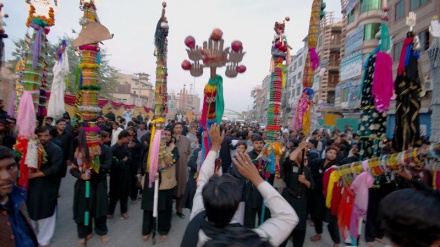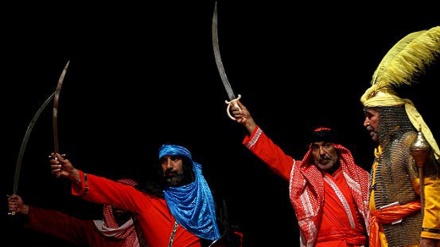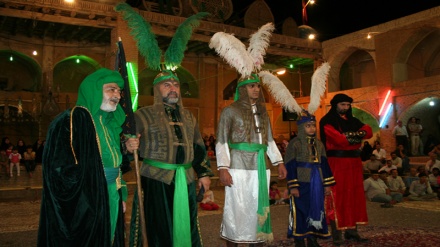Muharram mourning traditions in different lands - 33
In this series, which delves into the mourning traditions associated with the Immortal Epic of Ashura, we have been focusing on the various norms prevalent in different towns and cities of Iran for commemorating the heartrending tragedy of Karbala, after having dwelt on the history of mourning in different countries of the world for Imam Husain (AS).
Today we talk about the tradition of Shah “Husain, Vaay Husain”, which means “Our King Husain, O Dear Husain”, which is observed in the Azarbaijan provinces of Iran, and also in neighbouring provinces, such as Ardebil province, and even in what is now the Caucasus Republic of Azerbaijan, which for millenniums was an integral part of Iran before its seizure by the Russians in the 19th century.
In Persian this mourning tradition is known as “Shah Husain, Vaay Husain”, and in the local Turkic Azeri language they call it “Shakhsai, Vaakhsai”. This traditional mourning ceremony is the oldest of its kind in northwestern Iran. The ceremony starts a few days before Muharram and it continues right up to the afternoon of Ashura or the 10th of Muharram.
In virtually every town and village in these parts, “Our King Husain” mourning ceremony is performed in the month of Muharram. The ceremony is only performed by the Azeri-speaking people of northwestern Iran. The Shakhsai - Vaakhsai mourning ceremony is as follows: Men – young and old – stand shoulder-to-shoulder and form several long rows, and start moving down the main street of the town or village.
One of the mourners uses a loudspeaker to recite and sing emotional and poetic lamentations and elegies for the martyrs of Karbala. Large numbers of mourners in long lines reply by saying: “Our King Husain, O Dear Husain”, in tune with the rhythm of the elegies and lamentations.
Traditionally the mourners carry lamps and lanterns, and as the procession makes its way down the main street, gracefully and mournfully, every observer will be impressed by the depth of feeling, and reverence for the Chief of Martyrs, Imam Husain (AS). Very often, a variety of drums, large and small, as well as trumpets and cymbals are used in tune with the rhythm of lamentations and elegies.
In the city of Astara, in northwestern Iran and surrounding villages, the mourning ceremony of Shah Husain, Vaay Husain starts on the morning of Tasua or the 9th Muharram and continues until the afternoon of the next day, that is, Ashura.
Another important mourning ceremony in Ardebil province in northwestern Iran is the ceremony of “Sham’ Gardani” or “taking round the candle” (also known as rotation of the candle) – a mourning ceremony which commemorates in particular, Hazrat Abu’l-Fazl al-Abbas (AS), the brother of the Imam and the valiant standard-bearer of his small forces. This traditional mourning ceremony has been performed every Muharram for more than a thousand years in Ardebil Province.
This one-day ceremony starts on the morning of Tasua and continues well into the evening, signifying the love and reverence which the local people feel for Hazrat Abu’l-Fazl al-Abbas (AS). As its name suggests, local people take with them bundles of candles to local mosques and Husseiniyehs, lighting candles in memory of the valiant standard-bearer of Karbala.
The ceremony is observed not just in the city of Ardebil, but in surrounding towns and villages, for example the towns of Khalkhal, Meshkin Shahr and Bileh Savar, and others.
MD/AS/SS


